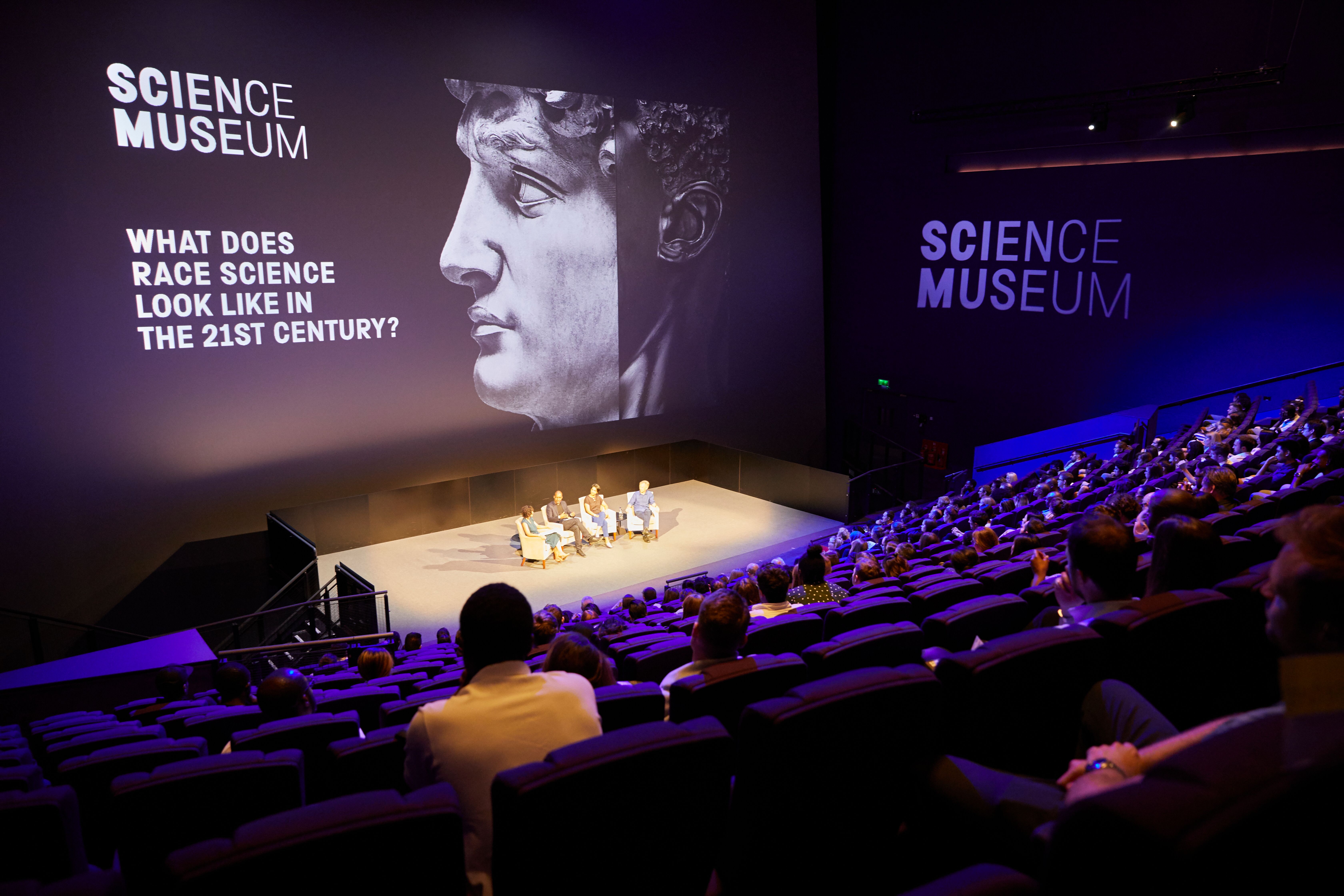The disturbing re-emergence of research into racial differences, when the prevalent belief among scientists is that race is a social construct that has no biological meaning, was the subject of a discussion at Lates last week in the Science Museum.
To analyse why dangerously divisive race science has seen a re-emergence in recent times, the link with the rise of nationalism, and other issues, the event was held in the museum’s IMAX during an adults-only Lates and MCed by journalist, writer, and broadcaster, Samira Ahmed.

Ahmed said: ‘It is an important time to read the history of why race science is resurgent, how it’s shaping public policy right now, how media coverage including of sport can be complicit, and how we can challenge it.’

She was joined by authors of three influential books for what she called a ‘really important discussion’ to examine how questionable science has been used to misrepresent the abilities of different ethnic groups, notably when it comes to intelligence and sport.
Angela Saini, author of ‘Superior: The Return of Race Science’, has spent five years (through Superior and her previous book, Inferior) – debunking the idea that science is always objective and apolitical, calling for more diversity in science.
Ultimately, however, research is done by people with all their talents, prejudices and foibles and, in Superior, Saini examines the long history of the ‘toxic idea of race and racial hierarchy.’
Even today, she said, ‘this idea has not gone away.’

Race was once considered when predicting how patients will respond to different medications, for instance, to treat hypertension, but genetic groupings (based on DNA analysis) are much more informative regarding differences in drug metabolism than skin colour or self-defined ethnic groups.
Moreover, the idea that sickle-cell anaemia is a “black disease”, thalassemia a “Mediterranean disease” and cystic fibrosis a “white disease” are over-simplistic.
Research (for example, see here, and here) now links the incidence of chronic illnesses to racial discrimination rather than to racial differences, said Saini.
Derek Bardowell, author of ‘No Win Race: A Story of Belonging, Britishness and Sport’, uses sport as a prism to explore attitudes to race and racism, from the Brixton riots to Brexit, meditating on how social attitudes have evolved from when his father arrived in Britain, as part of the Windrush generation, to those of his own son.
However, ‘we’re still viewed as black, as in black as a threat, as outsiders, as aggressive,’ he said.

Gavin Evans, lecturer at Birkbeck University, is the author of ‘Skin Deep: Journeys in the Divisive Science of Race’, which examines the repetitive history of race science, based in part on his experience growing up under apartheid in South Africa.
Evans focused on attempts to link race and intelligence, despite how neither are precisely defined, with intelligence depending on many genes and on environmental factors.
IQ was born of eugenics, the idea that the ‘genetic quality’ of the population could be improved, commented Saini.
However, the extent to which the nuances of human cognitive ability can be captured by a single number – IQ – is still debated.
This blog is part of a series inspired by Medicine: The Wellcome Galleries which open in November 2019. Stay tuned for more behind the scenes stories in the coming months.
